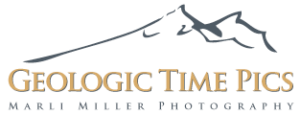Search for any geological feature below
–then click on the image to see a larger version in its correct format, a more detailed caption, and an ID number.

and please, drop me a line if you find this site useful!
*****
SOME POINTERS:
Photos typically include their locations, so you can use locations as keywords too. You get more hits with shorter words, and fewer hits as you become increasingly specific with increasing numbers of keywords. It’s best to use singular rather than plural (eg “volcano” instead of “volcanoes”).
As some words are included in others (“salt” within “basalt,” for example) you might want to be more specific to avoid getting a bunch of irrelevant photos.
Or you can just scroll down and see the most recently added photos… Enjoy!
Interbedded limestone (gray) and dolomite (orange).

Interbedded limestone (gray) and dolomite (orange). Photo is about 30 cm across.
Download ImageAthabasca Glacier, Jasper National Park, Alberta Canada. Roadsi

Athabasca Glacier, Jasper National Park, Alberta Canada. Roadside marker shows the location of the glacier’s terminus in the year 1908. (120709-99)
Download ImageInterbedded limestone (gray) and dolomite (light gray).

Interbedded limestone (gray) and dolomite (light gray). (120710-63)
Download ImageLake. Bow Lake, Banff NP, Canada

Bow Lake, the headwaters of the Bow River, Banff National Park, Alberta. (ID:120710-7t)
Download ImageBraided channels in glacial outwash

Braided stream channels in glacial outwash deposits, Banff National Park, Alberta, Canada. (120710-13)
Download ImageGlacial outwash deposits, (vertical) Jasper National Park, Alberta.

Glacial outwash deposits beneath Athabasca Glacier, Jasper National Park, Alberta, Canada. (120709-124)
Download ImageGlacial outwash delta, Canadian Rockies

Delta, built by glacial outwash deposits entering lake, Jasper National Park, Alberta, Canada. (120709-74)
Download ImageAthabasca Glacier and terminal moraine

Edge of the Columbia Icefield: Athabasca Glacier and terminal moraine. Note lateral moraines along sides and Sunwapta Lake below.
Download ImageCrowfoot Glacier, Canadian Rockies

Crowfoot Glacier, Banff National Park, Alberta, Canada. (ID: 120709-4)
Download ImageTalus cones, Canadian Rockies

Talus cones, built from rocks falling from the cliffs above. Crowfoot Mountain, Banff National Park, Canada. (120709-3
Download ImageTalus Cone, Canadian Rockies

Talus cone, Banff National Park, Canada. (ID: 120709-23)
Download ImageHazelia, a type of Cambrian sponge.

Hazelia, a type of Cambrian sponge, found in the Burgess Shale, British Columbia. (120708-47)
Download ImageKettle pond and glacier, Canadian Rockies

Kettle pond, formed through the melting of a remnant ice block, on the terminal moraine of the Athabasca Glacier, Jasper National Park, Canada. (120709-113)
Download ImageGlacial Ice Fall, Canadian Rockies

Glacial ice fall and terminal moraine, Banff National Park, Alberta, Canada. (ID: 120709-11)
Download ImageGlacially striated limestone and till on terminal moraine of Ath

Glacially striated limestone and till on terminal moraine of Athabasca Glacier, Alberta, Canada. (120709-109).
Download ImageGlacial Outwash, Canadian Rockies

Glacial outwash deposits beneath Athabasca Glacier, Jasper National Park, Alberta, Canada. (120709-123)
Download ImageTerminus of Athabasca Glacier, Jasper NP, Canada

Terminus and outwash of the Athabasca Glacier, Jasper National Park, Canada. Note the people on the glacier for scale, the lateral moraine, and the hanging valley in the background. (120709-101)
Download ImageLake Louise and Victoria Glacier

Lake Louise and Victoria Glacier, Banff National Park, Alberta, Canada. (ID: (120708-4)
Download ImageSelkirkia, fossilized Cambrian worm

Selkirkia, a fossilized Cambrian worm from the Burgess Shale, British Columbia. (120708-22)
Download ImageAnomalocaris, soft-bodied fossil, Burgess Shale

Anomalocaris, a feeding appendage of a soft-bodied fossil of the Cambrian Burgess Shale. (120708-43)
Download Image

You must be logged in to post a comment.